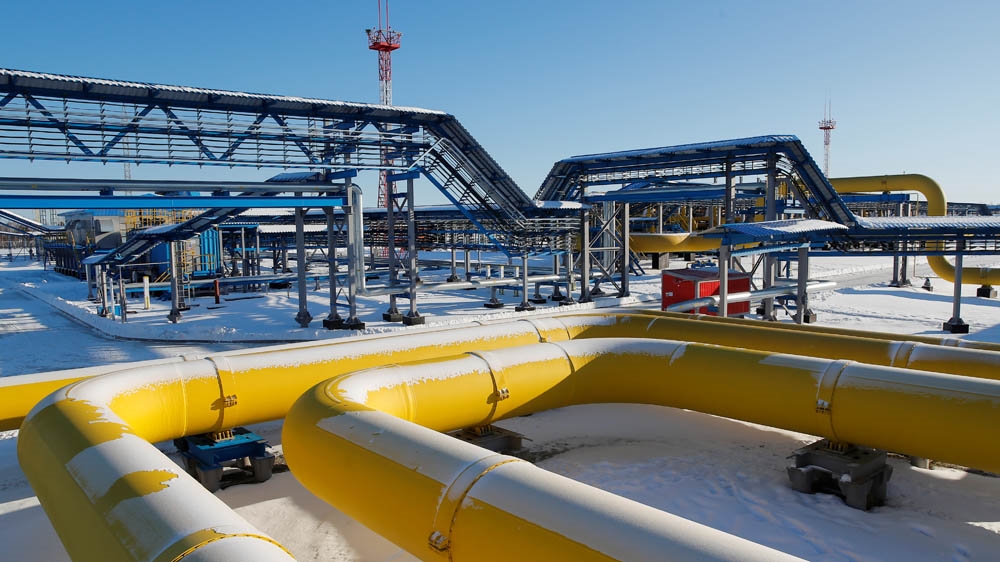The Power of Siberia gas pipeline, designed to deliver natural gas from Russia to China – the world’s largest natural gas importer – went online on Monday as Russia’s President Vladimir Putin and Chinese leader Xi Jinping inaugurated the project via video link.
“This is the first gas pipeline from Russia to China,” RIA Novosti quoted Alexey Grivach, deputy director-general of Russia's Energy Security Fund, as saying on Monday, citing radio Sputnik.
“On the one hand, it will allow expanding the supply of natural gas to the most dynamically developing market in the world, which has been growing at a double-digit rate in recent years,” Grivach said. “On the other hand, it will open up access to stable Russian pipeline supplies for China and meet its growing [energy] needs in the future. Including in regions that currently cannot receive imported gas at all and, consequently, are extremely affected by a large share of coal in the energy balance.”
The $400 billion deal signed with China National Petroleum Corporation (CNPC) in 2014 has become the biggest contract for the Russian energy giant Gazprom. The 3,000-kilometer (1,864-mile) route stretching from the Chayanda and Kovykta gas fields within the Irkutsk and Yakutia gas production centers to the city of Blagoveshchensk, near the Chinese border will pump 38 billion cubic meters (bcm) annually, or 1.3 trillion cubic feet, of natural gas for 30 years.
Dmitry Zhuravlev, general director of the Moscow-based Institute of Regional Problems, stressed that while the volume may seem small, the gas pipeline is profitable.
“If you can sell your product to two customers, eventually it will be much more profitable than selling [it] to one [customer],” Zhuravlev told on radio Sputnik on Monday. “Now the main direction of our gas and oil is Europe.”
“The very fact of the possible deliveries to China puts us in somewhat different economic relations with Europe. The profitability will be in any case, even if the numbers turn out to be worse than desired. This will be the reason for a different style of our economic relations with the West,” Zhuravlev said.
The pipeline comes after years of tough negotiations and work in difficult conditions, considering that the Power of Siberia pipeline runs through frigid, swampy, mountainous, and seismically active regions of Russia. Temperatures along the route range from -62 Celsius (-79.6° Fahrenheit) in Yakutia to -41 Celsius (-41.8° Fahrenheit) in the Russian Far East’s Amur region.
Meanwhile, Moscow and Beijing are negotiating the launch of a second part to the mega-project, namely Power of Siberia 2, aimed at providing industrial areas along China’s eastern coast with Russian natural gas. Officials in Kazakhstan, which borders both Russia and China, have already voiced their interest in getting in on the action.
Moscow’s pivot towards Asia for gas exports comes at a time when Europe has been diversifying its supplies away from Russia, following western sanctions being imposed on Russia following the crisis in Ukraine that started in 2014. Furthermore, a deepening of Russo-Chinese energy ties is a part of Beijing’s clean air policy that helps China switch from reliance on coal and other carbon-emitting sources, which provide about 60 percent of the country's energy total needs, to more eco-friendly resources like natural gas.
Russia has the world’s largest proved gas reserves, making it an attractive and logical option for China, mainly due to price and geographical proximity. According to the United States Energy Information Administration, Russia’s gas reserves total approximately 48 trillion cubic meters (tcm) of natural gas.







 Armenian sappers commenced on Monday mine-clearance operations in the territories adjacent to the Saint Mary Church in village of Voskepar (Armenia...
Armenian sappers commenced on Monday mine-clearance operations in the territories adjacent to the Saint Mary Church in village of Voskepar (Armenia...
 Russian Foreign Minister Sergei Lavrov has reasserted that Moscow has no intentions to stop the fighting in Ukraine, even if peace talks commence.
Russian Foreign Minister Sergei Lavrov has reasserted that Moscow has no intentions to stop the fighting in Ukraine, even if peace talks commence.
 Iran has refuted reports of alleged damage to Shimon Peres Negev Nuclear Research Centre located southeast of Dimona, Israel, during the recent air...
Iran has refuted reports of alleged damage to Shimon Peres Negev Nuclear Research Centre located southeast of Dimona, Israel, during the recent air...
 Iran’s Foreign Minister, Hossein Amir-Abdollahian, has labeled a foiled Israeli drone attack in certain parts of the country as a "failure" for Isr...
Iran’s Foreign Minister, Hossein Amir-Abdollahian, has labeled a foiled Israeli drone attack in certain parts of the country as a "failure" for Isr...



